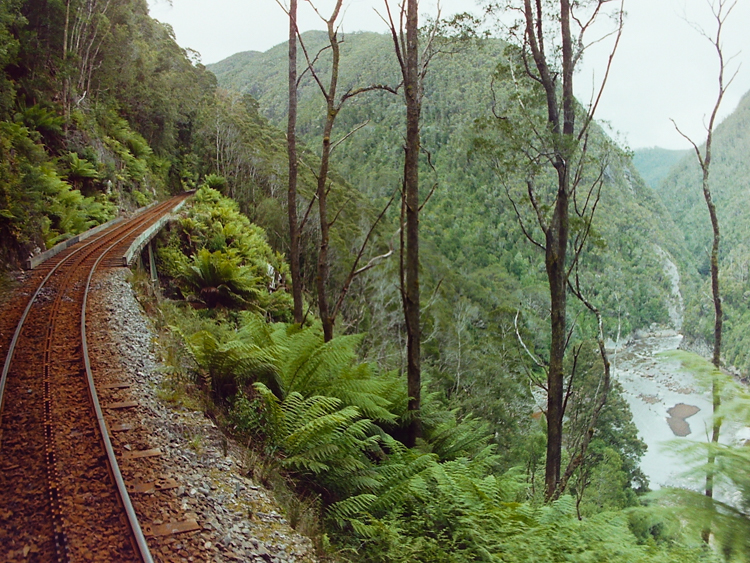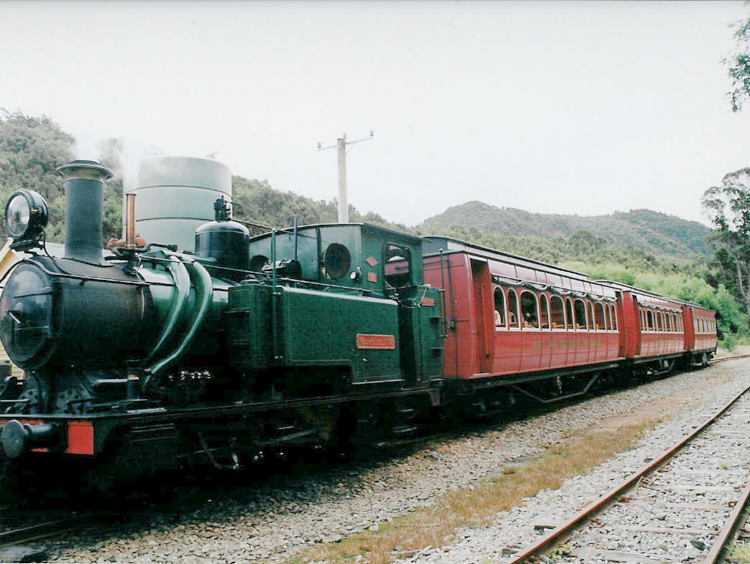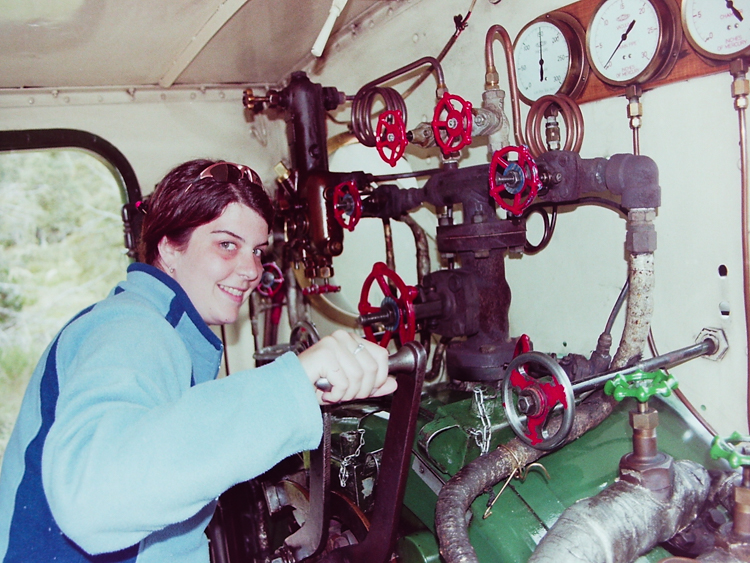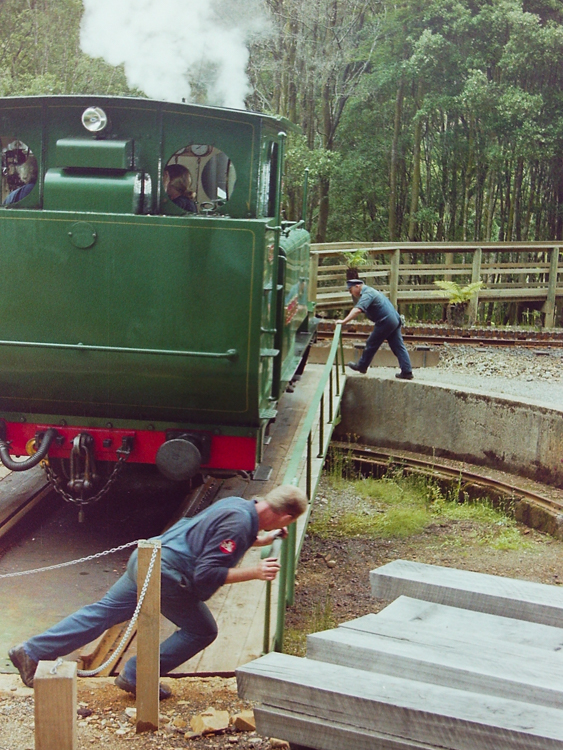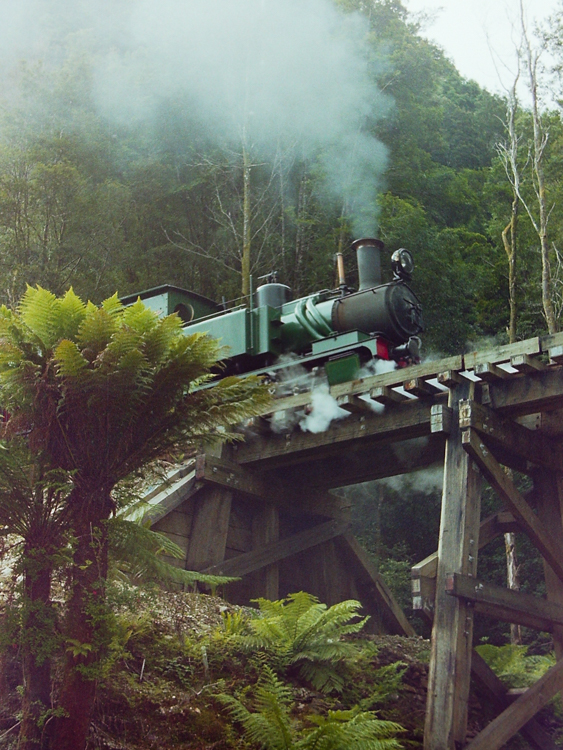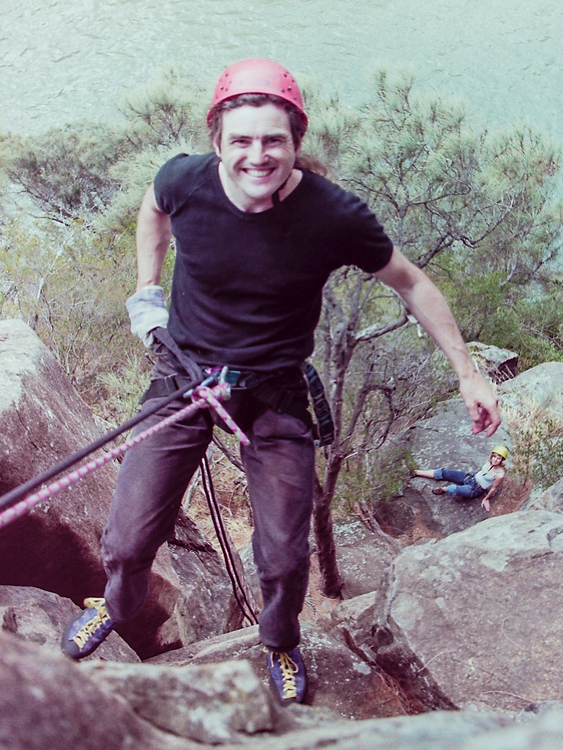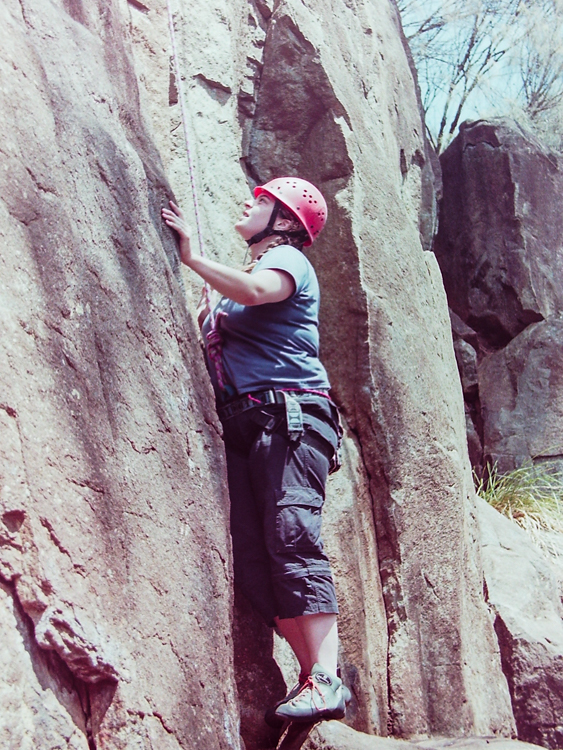I had always wanted to go to Tasmania. As a child, I would take my globe, put my finger on my home town of London, and then spin it around until I found the farthest possible spot away. Strictly speaking, this would put me in New Zealand, but I also had a collection of old maps and atlases which filled that area with sea monsters and “here be dragons”, a notional outline of the Australian coast, and a peculiar little dot right at the bottom labelled “Van Diemens Land”, sometimes marked by a small devil with a pitchfork. Tasmania was, to me then and for much of my life, the far ends of the earth.
Of course, from my new home Australia, it is just one of the States that make up this nation, and but a small hop by aeroplane from my current house in Canberra, so when Patrick and Helga turned up from Holland one month, I mentioned my Tasmania story to Bronwyn, and she said, “I’ve always wanted to go there too. Lets surprise them.”
Launceston
That morning, we whisked the bemused couple down to Canberra airport with the vague promise that we were taking them to “somewhere interesting”. The first flight was to Melbourne, and we kept tight hold of the onward tickets, but as it happened when we arrived at the transfer gate, all the sign said was “Launceston”. Patrick and Helga were still saying “Where the hell is Launceston?” when the plane left the tarmac and they suddenly realised that there was probably a map in the in-flight magazine…
From the air, Launceston looked a lot like the green fields of England, a somewhat welcome sight after our home town of Canberra’s worst-drought-for-fifty-years look. Once on the ground at the tiny airport, I waited in line at the rental car counter as the smiling clerk explained to the couple in front that the clause you must not drive on unsurfaced roads simply meant “…and when you do, don’t tell us about it.” When he took me to see my own vehicle, he explained away the scratches on the door as “the usual marks you make when trying to put the key in when you’re drunk,” and advised me not to worry too much about damage “because its only a rental car”.
After this interesting introduction to the Tasmanian psyche, we drove to our nearby hotel, and enquired about food. The receptionist looked aghast. “At ten at night? This is Tasmania, you know…”
However, we did end up grabbing some fast food, and headed over to The Lounge Bar, the only pub that everybody seemed to recommend. After a door-check for steel toecaps we were allowed into a cavernous old hotel ballroom with comfy sofas where we could sit with endless four-pint jugs of Carlton and observe as the girls danced to the rather decent cover band, and the blokes stood and watched, or – more often than not – stared glassily at the cricket on the TV over the bar.
One of the defining geological features of Launceston is its gorge, and after breakfast net morning we took a beautiful walk via a winding path and some suspension bridges to an old hydro power station, stopping on the way to watch spiny echidnas and cicadas doing their thing. The water was pretty darn cold, but Patrick went for a dip anyway.
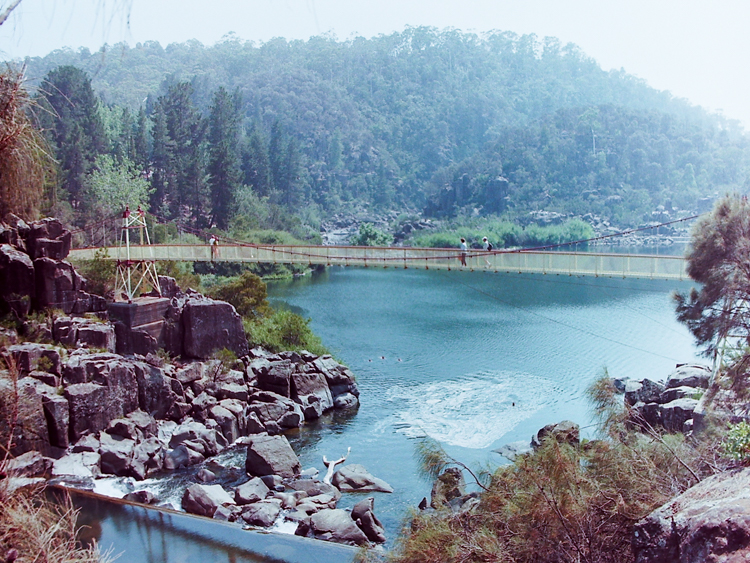
The entrance to Launceston Gorge
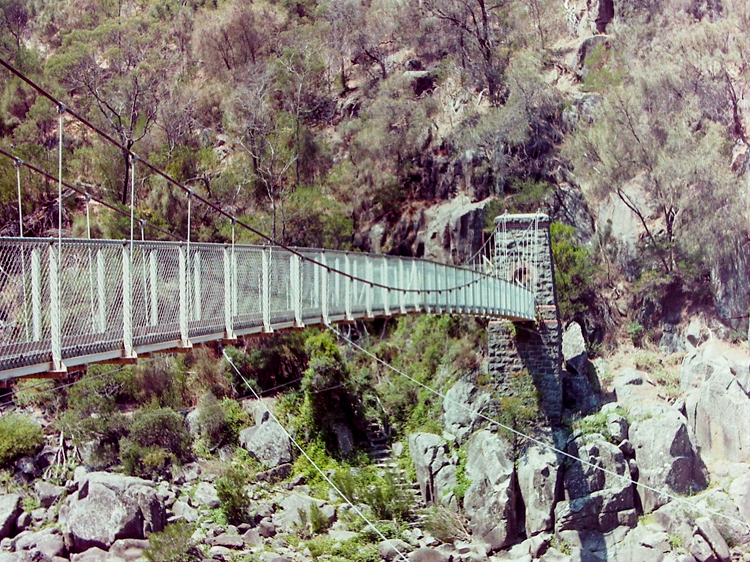
The footbridge to the old hydro power station
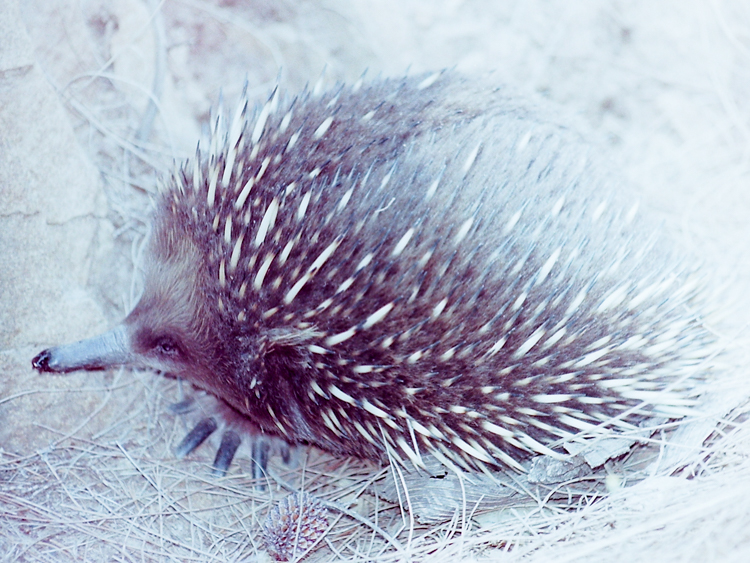
Spiny Echidna 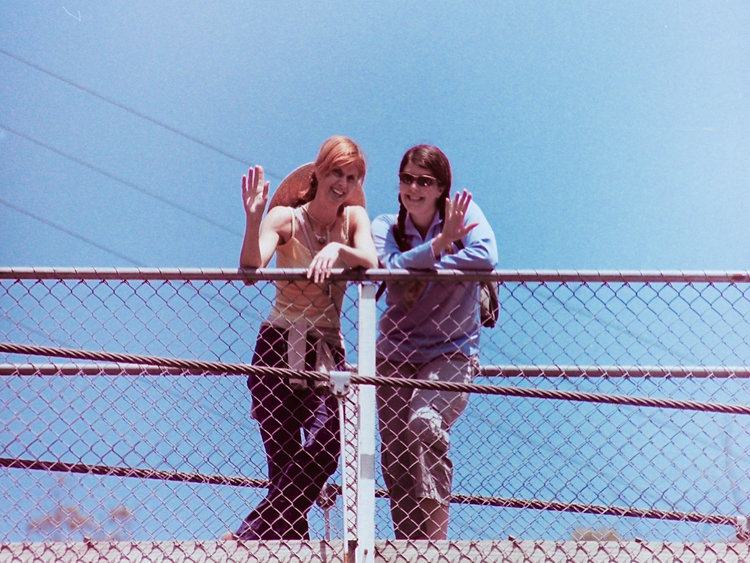
Helga and Bronwyn on the footbridge
Rosevears Estate
Hungry, now, we headed up into the hills above Launceston, knowing that the area was packed with vineyards and hoping to get some food. According to our guide book, only one – Rosevears – did lunches, so we were a little disappointed to roll up and be told that sorry, lunch was over. We must have looked a bit forlorn, because they offered to bring out some “nibbles”, which turned out to be a couple of enormous platters of excellent seafood, salads, meats, fruits and cheeses, washed down by ample tastings of their excellent wines. In fact, the wine-tasting was going so well that we thought it would be a good idea to ask if the small row of cabins that overlooked the valley were available for rent.
The waitress, somewhat flustered, said that they had only just been built and weren’t really supposed to be available yet, but we were welcome to rent them if we wanted. Heartened, we returned to the food and wine. It was a minute or so before we realised that the waitress was still standing somewhat awkwardly by the table. Nervously she blurted, “but you haven’t asked me how much they cost!”
“Don’t worry”, we assured her, “everything will be fine, and can we have another bottle of this excellent wine?”
Some time later, we ambled up to our cabins, to discover that each was a beautifully crafted cube of beech and glass, decorated inside in semi-Japanese style, and featuring a fully stocked wine cabinet and an enormous bath with views over the vineyard and the lake. Stupendous, sumptuous and beautiful.
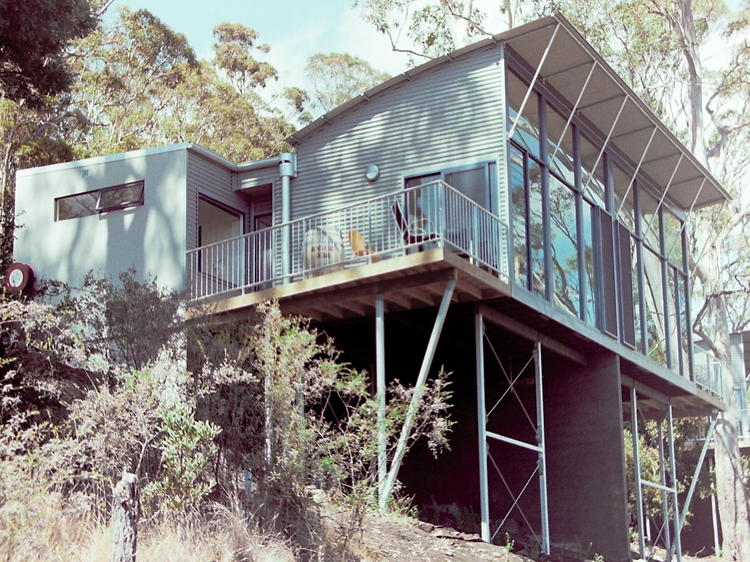
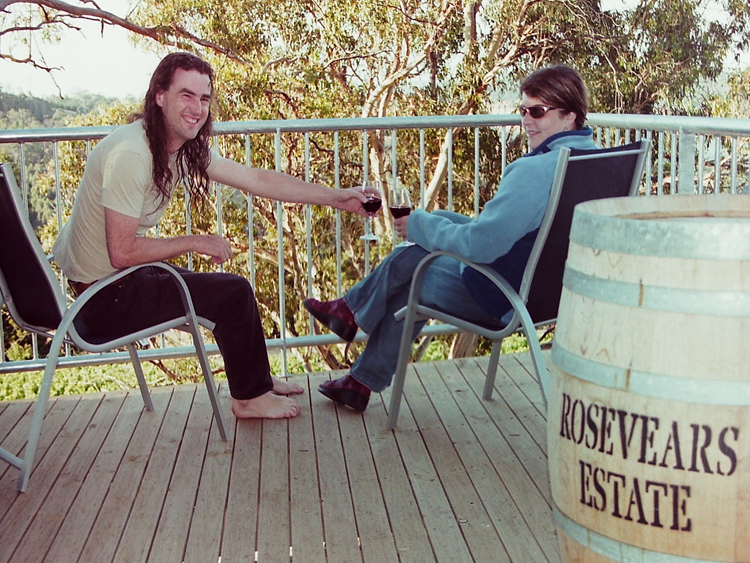
This is the life!
After a nap and bottle of Pinot Noir on the verandah, we ambled gently back down to the restaurant for dinner, where our waiter Ken kept us entertained and supplied with excellent food and wine, after which we repaired to the starlit balcony for a Pinot Noir nightcap.
Breakfast arrived, red-riding-hood style, in a covered basket on the doorstep. Sitting in the bath, feeding each other grapes as the sun rose over the vines, we never wanted to leave. However, eventually we all climbed back into the car and set off to Strahan.
ABT Wilderness Railway
Tasmania being vaguely triangular, and – at least on the map – not very big, we had thought that we’d spend a few days in each corner. There’s a steam train that runs from Strahan to Queenstown that we were intending to catch, so we picked what seemed to be the most direct route and set off, Patrick at the wheel because it was Bronwyn and my turn in the back. However, the road soon revealed itself to be an endless stream of mountain switchbacks, and the over-soft suspension of the big Mazda SUV soon had us feeling pretty sick. Thankfully a local store hove into view, and Bronwyn stumbled in to buy us some motion sickness tablets. They didn’t have any, but the owner took one look at Bronwyn’s face and gave her a handful from her own handbag. We were looking so green that Patrick and Helga volunteered to sit in the back, so I settled down to drive.
As corner followed corner it became clear that we would never reach Strahan in time, and that instead we would have to try to catch the train in Queenstown. I stepped up the pace a bit, and the tyres began to squeal as we tore over the final pass and headed back down the endless switchback down into town. Suddenly the mobile reception, which had been dead all over the bush-filled centre plateau, sprang into life, and Patrick was shouting over the sound of screaming rubber as he tried to get them to hold the train for just another few minutes, and yes of course we wanted first class tickets, as I floored it and drifted sideways down the tiny mountain road, finally pulling up beside the train in a triumphant cloud of burning rubber.
Then suddenly we entered another age, a lovingly restored Premier Class train carriage with a wooden viewing balcony and Julie, our laughing conductress, welcoming us aboard with a glass of champagne. We settled back into the seats as the old locomotive whistled and chuffed gently out of the station.
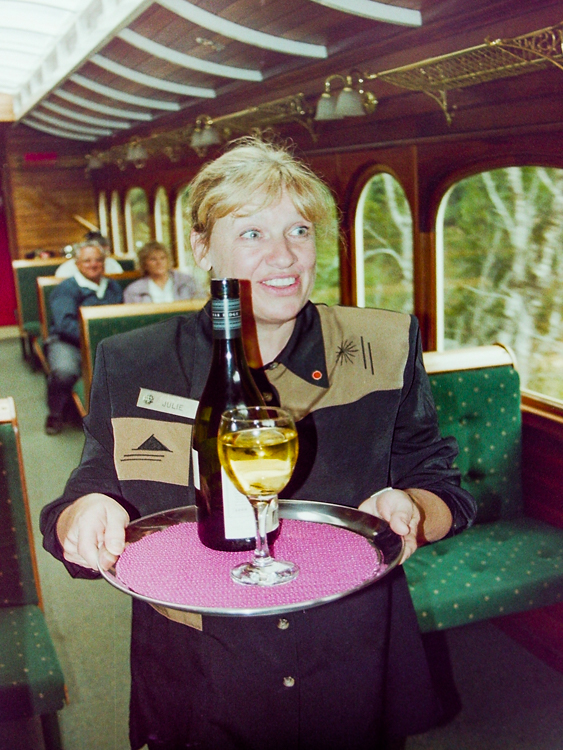
Julie. Another smile, another bottle of wine 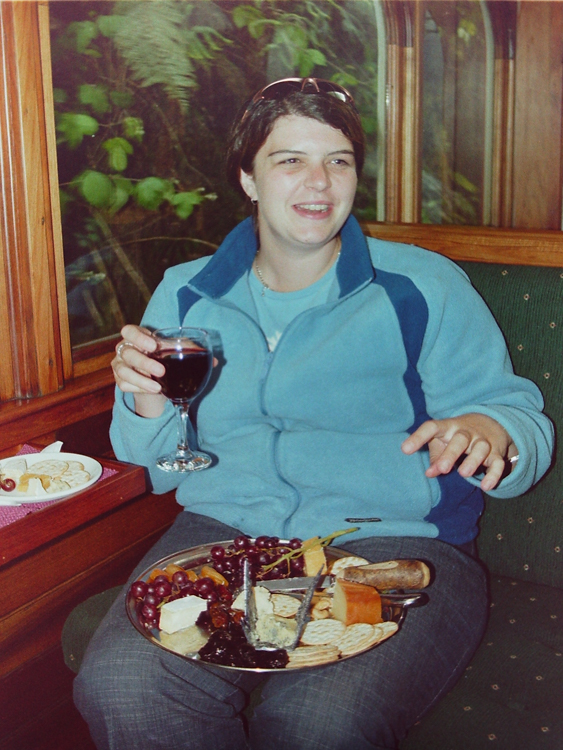
First Class snacks
The train used to haul copper ore from the mountains down to the town for processing, and the track was hacked through the rainforest, occasionally criss-crossing the heavily poisoned vividly yellow river over high wooden viaducts. Now the train carries tourists on a beautiful journey through the enormous ferns and palms, the river no less vividly yellow, but forming a beautiful counterpoint to the lush green of the recovering bush. I’m not sure how the they fared in Tourist Class, but for us the trip was lubricated with as much wine as we could drink, and an endless supply of snacks and fruit and cheeses, dotted all the while with Julie’s tales and jokes.
Eventually, however, it had to come to an end. The steam locomotive was pushed around on a turntable and coupled to another set of carriages travelling in the opposite direction, and a less exotic engine took us down to the bus back to Queenstown.
Everybody we’d spoken to had said that if we were staying in Queenstown, then we should stay at the Imperial, which turned out to be a wonderful colonial structure of carved dark wood, stained glass and sweeping staircases, and of course a bar.
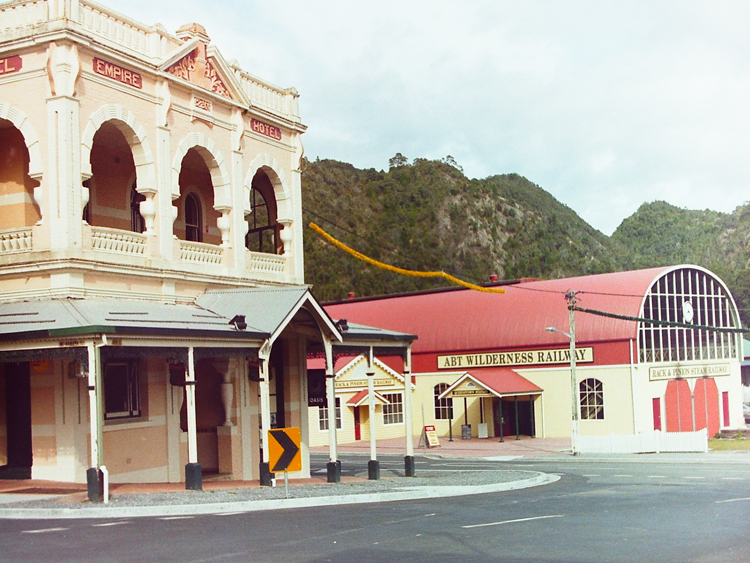
The Imperial Hotel and the ABT train station, Queenstown
Bonarong Wildlife Sanctuary
The next morning, the plan was to drive to Hobart, third apex of the Tasmanian triangle and southernmost point of Australia. It was Patrick’s turn to drive, so off we set up that same vertiginous switchback that I had so precipitously descended. The tyres started to scream again… and unfortunately we overcooked it on a bend and slammed sideways into the rock wall. Ouch. Luckily one of the wheels took most of the damage, so we changed that and kept going, and although the transmission was crunching quite alarmingly, we reckoned we would probably get there in one piece.
Finally we rolled into Hobart, once more surprised by how long it took to drive anywhere. Just outside the city is Bonarong Wildlife Sanctuary, a zoo that specialises in Tasmanian Devils. They have loads of them, and despite their fearsome reputation, they look really, really cute. In common with most Australian zoos, you are encouraged to feed the animals (although not the Devils, which despite their innocuous looks would be unlikely to give your hand back), and we had a fine time feeding the roos and emus.
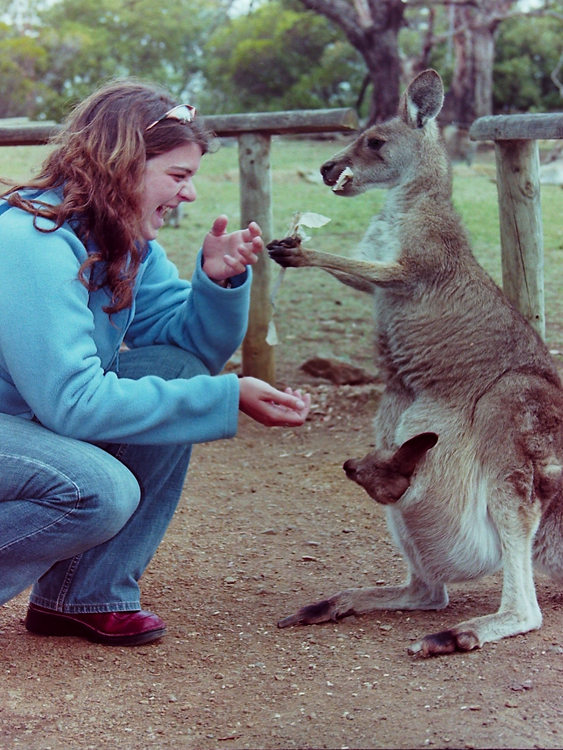
Bronwyn feeds a Joey while its mother steals the paper bag full of food 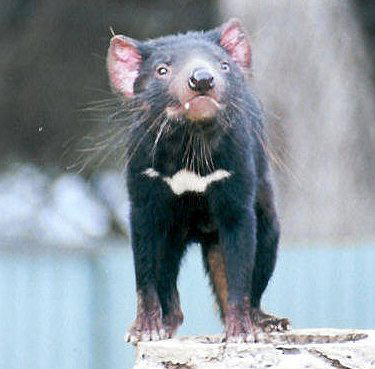
Taz in the flesh

Go on, put your hand in my cage, I’m really cute…
Climbing in Launceston Gorge
We had hoped to do some climbing in Hobart, but they weren’t able to take us on short notice, so we booked a session back in Launceston, climbed back into the car and headed northwards, back to the gorge where it all started. There we met Bob from Tasmanian Adventures, who took us for a very enjoyable clamber in the sunshine.
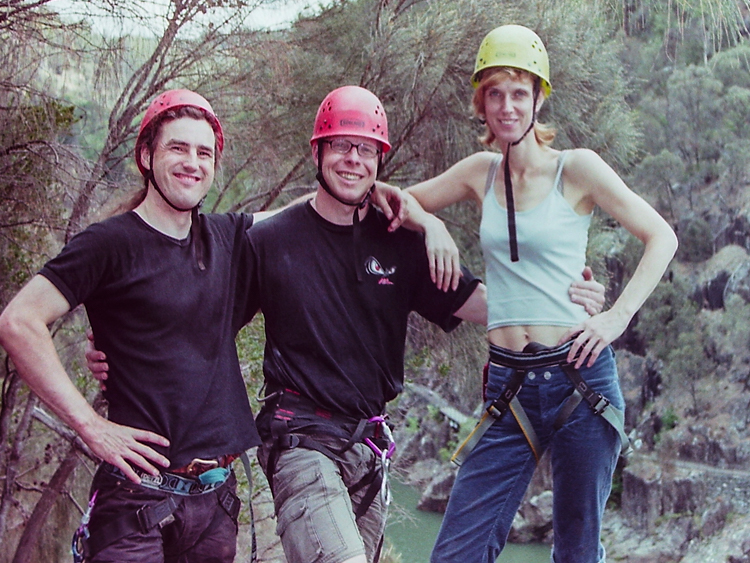
Tres Amigos on the road again
Finally, tired and happy, we returned to that first Launceston hotel for a last night of excellent Tasmanian beer, tall tales, and dreadful games of pool.
